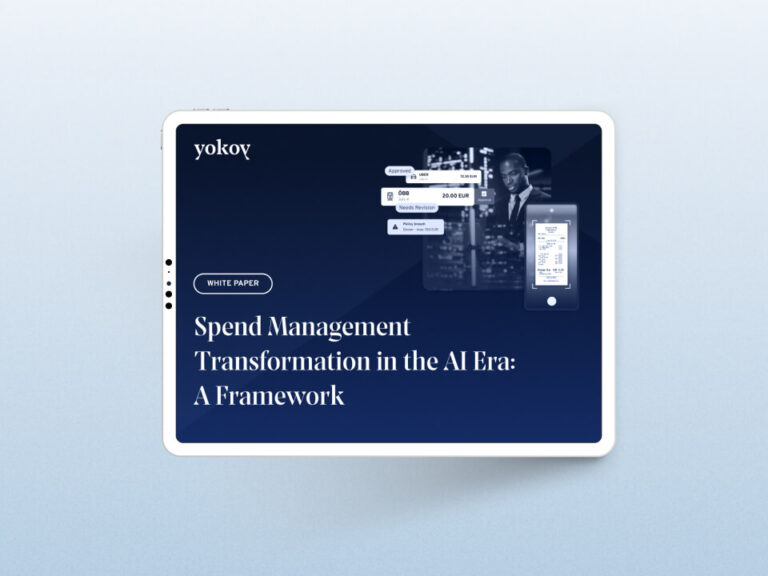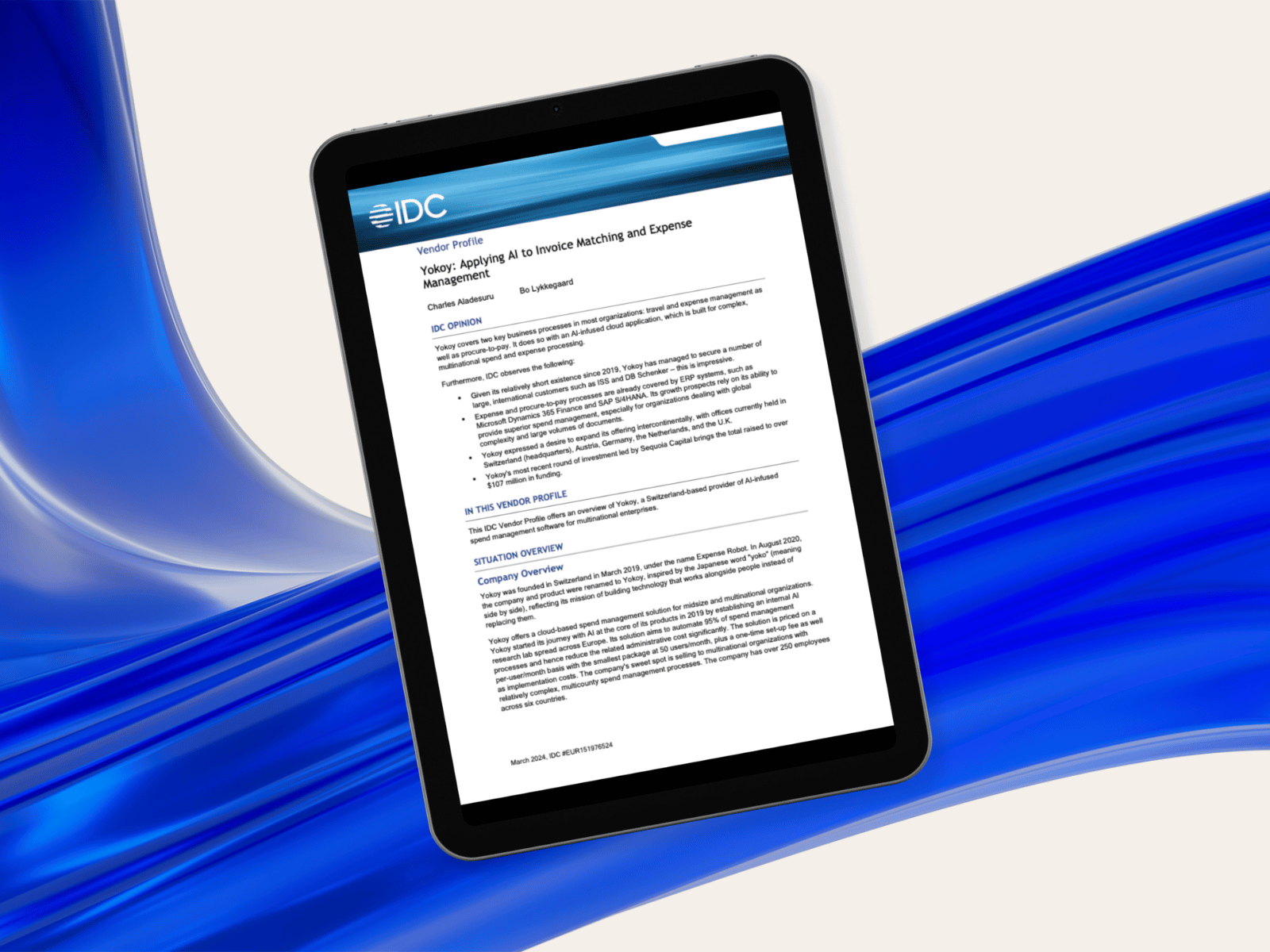Home / The CFO’s Role Isn’t Changing – But Technology Is
The CFO’s Role Isn’t Changing – But Technology Is
- Last updated: August 1, 2023
- AI in finance, Finance transformation

Co-founder & CEO, Yokoy
Contrary to the prevailing narrative in most articles today, the role of a CFO in an organization has remained largely unchanged in recent years, and this trend is expected to persist in the foreseeable future.
The CFO remains one of the most important – if not the most important – sparring partners of the CEO, managing liquidity and investments, overseeing operational finance tasks, reporting official figures, and providing internal financial insights.
However, what has been changing significantly are the tools available to the CFO and their teams, as well as the speed at which these tools are evolving.
The speed of technological advancement is crucial because it means that some CFOs are already implementing and leveraging the latest technologies, providing them with a competitive edge through money savings (via automation) and improved internal financial insights.
This competitive advantage then compels other finance leaders to adopt these technologies quickly, creating a cycle of rapid adoption to stay ahead of the curve.
Let’s take a closer look at these tools, particularly focusing on the advancements in artificial intelligence (AI) technologies.
First came the OCR revolution
In the 2010s, the advent of digitization technologies like Optical Character Recognition (OCR) significantly changed the way paper-based documents were transformed into digital formats. And as a consequence, the way offshoring centers were operating changed as well.
Optical Character Recognition (OCR), which can read letters and numbers on a scanned document, enabled a faster and more efficient process, reducing the need for manual data entry and human typing, particularly in offshoring centers that were prevalent at the time.
By utilizing OCR, paper-based documents could be scanned anywhere in the world and then sent digitally to offshoring centers, where the information was already converted into an online document. This not only saved time but also reduced the number of offshoring workers required.
Moreover, advancements in rule-based tools, referred to as robots, allowed tasks to be easily programmed based on predefined rules without the need for extensive technical knowledge.
These rule-based tools have streamlined system integrations (both file-based and API-based), eliminating manual tasks like typing and copying data from one system to another. With data transfers automated, and the risk of manual errors reduced, the old ways of working became redundant.
Currently, there are only a few offshoring centers that still manually type paper-based documents into computers and those have fallen far behind their competition. But despite these advancements, there are still tasks that cannot be fully automated using rule-based tools.
One example is data validation. Creating accounting bookings out of digital invoice documents often involves validation tasks that require human intervention. Finding specific data points, such as Purchase Order numbers on invoices, can be challenging, as the location and format of such information may vary.
For a human, this is no problem, at least for an adult who understands what an invoice is. A child could most likely do it after being trained to do it, even when the data is unstructured and the PO number is handwritten across the digitally created document.
This is exactly where artificial intelligence comes in handy.
AI changes the playing field
Artificial intelligence functions much like human intelligence in that it also requires training.
To use the same example from above, AI software needs to be “taught” using a large dataset of invoices to recognize and validate Purchase Order numbers effectively. By using these training documents, the AI software learns the specific use case, gradually becoming proficient in identifying and validating Purchase Order numbers.
Unlike rule-based engines, which operate on predefined sets of rules, AI engines rely on examples from training data. This key distinction is what grants artificial intelligence its immense power and transformative capabilities across various domains, not just in finance but in any area where processes involve a combination of repetitive steps and logic-driven tasks.
The main challenge with AI technology therefore lies in the quality and quantity of the training data.
To master complex tasks, such as creating accounting bookings directly from invoices, millions of invoices are required to adequately train the AI engine. Nonetheless, this presents a significant opportunity for finance teams to enhance their automation capabilities and maintain their competitive edge.
"With AI-based software taking over increasingly complex processes, finance teams can stay competitive without having to deal with technology research and the intricacies of AI algorithms."
Philippe Sahli, Co-founder & CEO Yokoy
At Yokoy, we place a strong emphasis on in-house AI research, allowing our software to continuously learn and evolve with each document processed. Our platform is centered around artificial intelligence, which learns from every invoice, purchase order, and expense receipt it encounters.
With each data point processed, the AI becomes increasingly accurate, even when dealing with complex and unstructured invoices and purchase orders. Over time, our AI can learn how to read and understand them, resulting in nearly fully autonomous finance processes for our customers.
This is called the “software of the future”. This cutting-edge approach ensures that finance teams can stay competitive without having to deal with technology research and AI complexities.
We believe that finance leaders should not be burdened with the intricacies of AI algorithms, as it is undoubtedly a highly technical field. However, for a modern CFO, it is imperative to assess and implement the right tools within their company.
AI technology enables not only automated data processing, but also real-time data quality checks, consolidation, and even autonomous reporting. The capabilities of such tools extend to fraud checks and outlier reports, and the integration of chatbots empowers FP&A teams to effortlessly create reports in any desired format.
For instance, an FP&A manager can instruct a chatbot to generate a report of all open invoices from Sweden, exceeding 10,000 EUR, and originating from a first-time supplier, in an Excel format. This process that used to take hours in the past is now accomplished within milliseconds, thanks to the chatbot’s efficiency.
As artificial intelligence reshapes the world of finance at an astonishing pace, it is essential for CFOs and finance teams to evaluate and implement AI-based tools. By embracing AI now, they equip themselves to harness the full potential of future advancements, ensuring a strong competitive edge in the ever-changing financial landscape.
White paper
Spend Management Transformation in the AI Era: A Framework
In the era of AI-driven digital transformation, traditional finance processes are becoming obsolete. As companies grapple with increasing complexities and rising competition, they must recognise the transformative potential of artificial intelligence to stay ahead of the curve.

Simplify your spend management
Related content
If you enjoyed this article, you might find the resources below useful.


